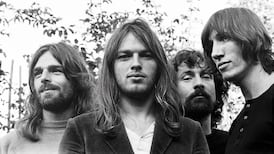Every Friday morning you’ll find the On the Record playlist online at Irishtimes.com. This is a list of the 10 tracks or albums that have garnered the most attention round my way all week, and comes with Bandcamp, Soundcloud, YouTube and Spotify links.
The OTR playlist is one of a gazillion such lists out there, all aiming to cut a swathe through the acres amounts of new music available. You’ve probably got your own favourites, the music fans or writers you rely on to guide you towards the sounds you’re likely going to dig.
There also the power-playlists on the streaming services such as Spotify or Apple Music, pointing thousands of listeners towards new and recommended tunes.

In most cases an algorithm is hard at work in some server farm to come up with these lists. For instance, tracks that appear on each user’s personalised Discover Weekly playlist on Spotify are chosen “based on your listening history and the listening history of others with similar tastes to you”. The Fresh Finds’ playlist relies on data-mining the users Spotify’s algorithm considers to be early adopters.
Regardless of whether there’s a computer or a human picking the tracks, playlists are becoming a key part of music promotion. Given that many of the more popular playlists have thousands of subscribers, they play a crucial role in introducing new acts to the widest possible audience.
At a recent conference, Spotify's director of label relations, Will Hope, talked about how Hozier and Take Me to Church became the most shared track on the service in 2014. Nearly half of the act's first plays in 2014 came from Spotify's playlists, Hope said, with a quarter of all plays in one month coming directing from the Spotlight playlist.
Naturally, there are some interesting music marketing machinations already at work behind the compilation of power-playlists. Just as your average radio station’s playlist is often influenced by the plugging operations of various labels, many online playlists are also subject to similar input from interested parties.
For instance, it’s no surprise that we’re seeing the major labels’ playlisting brands showing up among the list of 10,000 playlists already open for business on Apple Music.
As well, there are a growing number of companies that pitch new acts and tunes to playlisters. According to some of these, some playlisters are asking for cash for placement, though you will be hard- pressed finding anyone to admit to such blatant payola.
As with traditional radio, not every listener will be bothered by how playlists are compiled. All they want is someone to provide a trail through the infinite streams to get them to the good stuff. As playlists continue to grow in importance, though, expect more and more interest in just what is going on behind the scenes, especially as labels and bands seek to game the system.
YOU’VE GOT TO HEAR THIS
Girl Band - Holding Hands With Jamie
The soon-to-be debut album from the only Irish band who sound like a rocket taking off in close proximity. A powerful wham-bam racket of bracing, gnarly guitars, gritty, end-of- the-world drums and superb shouty, snarly bits from a band who really do put blood in the music. Hit!
ETC
Pop-up Dublin jazz club Strut will take up lodgings in the Peacock Theatre from November 18th to 21st. Acts will include Danish trio Ibrahhim Electric, Blue-Eyed Hawk, The Necks, the Guilfoyle trio with Austrian trumpeter Gerhard Ornig, and a return to the stage where the Alone Together live album was recorded for guitarist Louis Stewart, flautist Brian Dunning and double- bassist Neil O'Loghlen.









